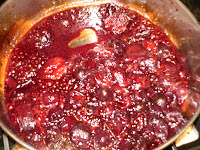
"DON'T YOU EVER, EVER FAKE IT!!!"
The Pastry Chef-Instructor - a former wrestler and Marine - was right up in my face.
"IF YOU DON'T KNOW HOW TO DO SOMETHING ... ASK! GET INSTRUCTIONS! BUT DON'T EVER FAKE IT!"
In fact I had just badly messed up some bear claws that we'd been working on. I hadn't paid attention to the demo and now it was time to pay for my lack of focus.
I'm a good cold- and hot-line cook. I'm good with a variety of savory cooking applications.
But I'm just not a baker ... a common Achilles' heel in savory cooks. Which is why I don't make my own puff pastry. Why should I, when plenty of top-quality products are available, ready-to-use?
I did wind up passing the class. The Chef-Instructor was tough, but fair, and he gave me other chances to work hard and redeem myself. Ultimately, I learned to respect baking and pastry ... and stick to what I'm good at!
Still want to make your own puff pastry dough? Check out this recipe, and knock yourself out.










